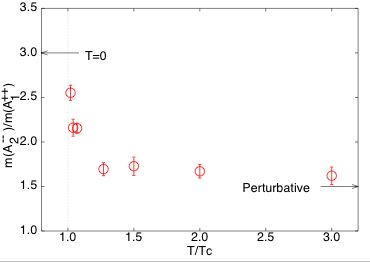About the collaboration
ILGTI is a loose collaboration of many Indian lattice gauge theorists who share resources and work. We are open to new members joining the collaboration. If you have a regular faculty position anywhere in India and would like to join the ILGTI, please contact us.
What we do
A short description
We are interested in the physics of matter in extreme conditions. An example of this is matter at temperatures in excess of 2 trillion degrees (2.1012 Kelvin or 175 MeV). Under such conditions matter takes extremely different forms and has peculiar properties. We compute the properties of such matter from a fundamental theory using supercomputers. Our computations are used in predicting results of experiments at CERN (Geneva) and BNL (New York). They also have implications for the evolution of the universe.
We are also interested in the structure and properties of composite particles which have strong interactions. In particular, we examine the properties of particles called glueballs, or particles with four or five quarks, or particles with heavy quarks. Collider experiments look for such exotic particles, and have already found a few.
One of our results
We measured the screening masses for two kinds of operators made of gluon fields. The one called the A1++ is made of two gluons or more. The one called the A2-- is made of three gluons or more. If there are (almost) free gluons in the plasma, then the ratio of the screening masses should be (close to) 3/2. The picture shows that the ratio nears this value for T>1.25Tc, but closer to the QCD phase transition there are strong devations from this picture. The degrees of freedom near the transition are not gluons.
Jobs, projects and teaching
We could certainly do with your help: whether you are a reasearch scientist, or a student. If you are a teacher and you would like to talk to us, we welcome contact. See our page on jobs, projects and contact for more details.
